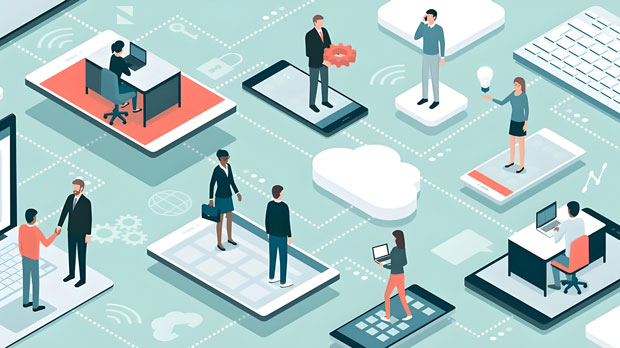For Python developers working with proxy management, the selection of the right tool is crucial for optimizing performance, reliability, and security. Among the available options, PYPROXY proxy stands out with its robust features designed to streamline proxy pool management. Unlike other proxy pool tools, PYPROXY offers a more intuitive interface, higher scalability, and enhanced security. In this article, we will explore how PYPROXY proxy differentiates itself from other proxy pool management tools, analyzing its core features, performance benefits, and practical applications for Python developers. 1. Introduction to Proxy Pool ManagementProxy pools are collections of proxy servers used by developers to mask their IP addresses, improve security, and circumvent geographical restrictions. For Python developers, managing proxy pools effectively is vital to ensuring smooth interactions with various web services, particularly when dealing with large-scale data scraping, web crawling, or interacting with APIs. Proxy pool management tools are designed to automate the selection, rotation, and maintenance of proxy servers to prevent blocks or bans.2. Key Features of PYPROXY ProxyPYPROXY proxy offers a range of features that make it a standout choice for Python developers looking for a reliable and efficient proxy pool management tool.2.1. Easy-to-Use InterfaceOne of the most notable aspects of PYPROXY is its simple and intuitive interface. For developers, ease of integration and use is crucial. PYPROXY is designed to be beginner-friendly, allowing Python developers to integrate proxy management seamlessly into their existing codebase. The tool supports multiple types of proxy protocols, including HTTP, HTTPS, and SOCKS, enabling developers to customize their proxy pools according to specific project needs.2.2. Proxy Rotation and Load BalancingPYPROXY excels in its ability to manage large sets of proxies and rotate them efficiently. Proxy rotation is critical for avoiding detection and bans when conducting large-scale data scraping or web crawling. PYPROXY ensures that proxies are rotated at optimized intervals, which helps maintain anonymity and avoid traffic bottlenecks. Additionally, it offers advanced load balancing features, ensuring that no single proxy gets overloaded with requests, thereby enhancing overall performance and reliability.2.3. Scalability and FlexibilityScalability is another key feature of PYPROXY. As projects grow, developers often need to scale their proxy pools to accommodate increased demand. PYPROXY allows for easy expansion of proxy pools, enabling developers to manage thousands of proxies with minimal effort. This scalability ensures that the tool can be used for both small and large-scale projects, offering flexibility in terms of both size and configuration.2.4. Proxy Health Monitoring and Error HandlingAn essential aspect of proxy pool management is monitoring the health of each proxy in the pool. PYPROXY provides real-time proxy health checks, automatically identifying dead or slow proxies and replacing them with functional ones. This proactive error handling ensures that developers can focus on their core tasks without worrying about the maintenance of their proxy pools. This feature significantly reduces downtime and enhances the efficiency of the proxy pool.2.5. Security and PrivacyPYPROXY places a strong emphasis on security and privacy. It provides developers with tools to ensure that their proxy pools remain secure and that their identities are protected. Features like IP rotation, encrypted connections, and anti-fingerprinting mechanisms enhance the privacy of users, making it harder for websites to track or block requests coming from the same IP address. By ensuring anonymity and bypassing IP-based restrictions, PYPROXY offers a significant advantage over other proxy pool management tools that may not provide the same level of security.3. Performance Benefits of PYPROXY Proxy3.1. Speed and EfficiencyPYPROXY has been designed for speed, ensuring that proxy rotation and selection processes occur rapidly without introducing delays. The tool optimizes the use of available proxies, ensuring that requests are routed through the most efficient servers based on real-time performance data. This ensures that Python developers can maintain high throughput, even when handling large volumes of requests.3.2. Reliable Performance Under High LoadWhen working with large datasets or performing high-frequency web scraping tasks, the stability and reliability of proxy pools become critical. PYPROXY has been designed to handle high loads efficiently. Its load balancing and failover mechanisms ensure that the proxy pool can maintain its performance even under heavy traffic. This makes it an excellent choice for projects requiring reliable, high-volume data extraction.4. Comparison with Other Proxy Pool Management ToolsWhile there are many proxy pool management tools available for Python developers, PYPROXY offers a unique combination of features that differentiate it from competitors.4.1. Advanced Proxy RotationMany proxy pool management tools offer basic proxy rotation, but PYPROXY provides more advanced features, such as dynamic rotation intervals based on proxy health, load balancing, and real-time proxy performance tracking. This ensures a smoother and more efficient operation compared to tools that only provide simple proxy switching mechanisms.4.2. Greater ScalabilitySome proxy pool management tools struggle with scalability when handling large datasets or multiple proxies. PYPROXY, however, is built to scale seamlessly. Whether you are working with a small set of proxies or need to manage thousands, PYPROXY offers flexibility and ease of use that many other tools lack.4.3. Enhanced Security FeaturesWhile many tools focus on proxy management, PYPROXY goes a step further by emphasizing security features, such as IP rotation, encryption, and anti-fingerprinting. These features ensure that users can maintain a high level of privacy and security, which is especially important when working with sensitive data or trying to bypass security mechanisms.5. Use Cases for Python DevelopersPYPROXY is versatile and can be applied to a variety of use cases in the development world. Below are some of the most common scenarios where PYPROXY can be particularly useful.5.1. Web ScrapingWeb scraping often involves extracting data from multiple sources, sometimes requiring numerous requests from different IP addresses. PYPROXY's proxy rotation and load balancing features ensure that web scraping operations can continue uninterrupted, even when scraping a large number of pages or interacting with websites that have strict anti-bot measures.5.2. Bypassing Geo-restrictionsFor projects that involve accessing content restricted to certain regions, PYPROXY can help developers bypass these geo-restrictions by routing requests through proxies located in different regions. This is especially useful for web scraping, content aggregation, and market research.5.3. Automating API RequestsWhen making automated API requests, developers can use PYPROXY to distribute requests across a pool of proxies, avoiding rate limits and restrictions imposed by API providers. This feature helps ensure that developers can maintain consistent access to APIs without running into throttling issues.PYPROXY stands out among proxy pool management tools for Python developers due to its comprehensive feature set, including advanced proxy rotation, scalability, security, and user-friendly interface. Its ability to handle large-scale projects efficiently, combined with its focus on security and performance, makes it an ideal choice for developers looking to enhance their proxy pool management. Whether you're working on web scraping, bypassing geo-restrictions, or automating API requests, PYPROXY provides the tools needed to ensure smooth and efficient proxy management.
Jun 04, 2025






















































